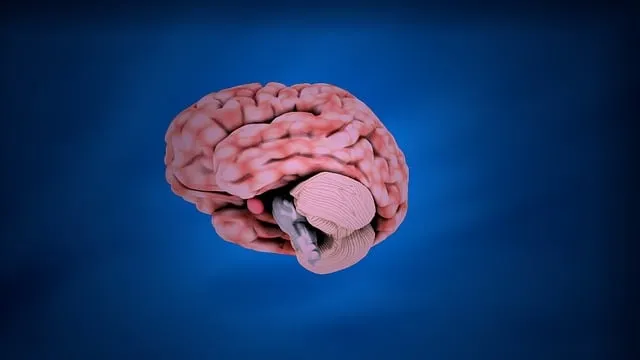Golden Kaiser Permanente behavioral health services prioritize comprehensive risk assessment and harm minimization, creating safe and supportive environments through proactive strategies. Integrating mental health support into primary care, they emphasize holistic care, prevention, and early intervention. Using evidence-based practices and tools, their approach considers individual, environmental, and situational factors to predict and mitigate risks. Key initiatives include depression prevention programs, community outreach, and stress management education, empowering clients with coping skills and fostering resilience. By continuously improving risk assessment methods and incorporating patient feedback, Golden Kaiser Permanente sets a standard for high-quality behavioral health care.
Risk assessment and harm minimization planning are essential components for providing safe and effective behavioral health services. This article explores a structured approach to ensuring client well-being through comprehensive risk management. We begin by establishing a solid foundation in understanding risk assessment, drawing from the esteemed practices of Kaiser Permanente. Subsequent sections delve into identifying and evaluating risks specific to behavioral health settings, developing robust harm minimization plans, and implementing continuous improvement strategies for evolving risk landscapes. By adopting these principles, behavioral health services can uphold the golden standard of care, mirroring the exemplary model set by Kaiser Permanente.
- Understanding Risk Assessment: A Foundation for Safe Services
- The Golden Standard: Kaiser Permanente's Approach to Behavioral Health
- Identifying and Evaluating Risks in Behavioral Health Settings
- Developing Comprehensive Harm Minimization Plans
- Continuous Improvement: Monitoring and Updating Risk Strategies
Understanding Risk Assessment: A Foundation for Safe Services

Risk assessment is a cornerstone in ensuring Golden Kaiser Permanente behavioral health services maintain a safe and supportive environment for all clients. It involves meticulously evaluating potential hazards and their likelihood of causing harm, enabling proactive measures to mitigate these risks. This process is not merely a checklist exercise but a dynamic approach that considers the unique needs and challenges faced by individuals seeking behavioral health support.
A comprehensive risk assessment goes beyond identifying threats; it also focuses on strengthening communication strategies and coping skills development. By empowering clients with effective coping mechanisms, such as those taught during depression prevention programs, healthcare providers can foster an environment that promotes healing and recovery. This holistic approach ensures that Golden Kaiser Permanente’s services not only address immediate risks but also equip individuals with the tools to navigate future challenges safely and effectively.
The Golden Standard: Kaiser Permanente's Approach to Behavioral Health

Kaiser Permanente is renowned for its Golden Standard in behavioral health services, setting a benchmark for comprehensive and patient-centric care. Their approach prioritizes prevention and early intervention, focusing on holistic well-being. By integrating behavioral health into primary care, Kaiser Permanente ensures that mental health support is accessible and seamlessly woven into patients’ overall healthcare experience. This model not only aims to treat existing conditions but also promotes Burnout Prevention through stress management programs and Mental Health Education Programs Design tailored to diverse populations.
The organization’s commitment extends to Trauma Support Services, recognizing the profound impact of traumatic experiences on mental health. Their strategic planning involves creating safe spaces and implementing evidence-based practices to help individuals heal and rebuild their lives. Kaiser Permanente’s Golden Standard exemplifies a forward-thinking approach that empowers both patients and healthcare providers, fostering healthier communities through proactive harm minimization strategies.
Identifying and Evaluating Risks in Behavioral Health Settings

In behavioral health settings, identifying and evaluating risks is a critical step in ensuring client safety and delivering high-quality care, reflecting the comprehensive approach seen in Golden Kaiser Permanente behavioral health services. This process involves a thorough examination of various factors that could potentially cause harm to clients. Risk assessment tools and techniques are employed to analyze individual, environmental, and situational variables, enabling professionals to anticipate and mitigate risks effectively. By adopting evidence-based practices, these settings can create a supportive environment while managing potential hazards.
Effective risk evaluation requires a multi-faceted strategy, including the Community Outreach Program Implementation, which fosters connections with diverse communities and promotes understanding of behavioral health issues. Additionally, the Mental Wellness Podcast Series Production serves as an innovative tool to disseminate information, raise awareness, and reduce stigma, thereby indirectly contributing to risk minimization. Communication strategies play a pivotal role in this process, ensuring that all stakeholders are informed about risks, their implications, and corresponding safety measures.
Developing Comprehensive Harm Minimization Plans

In developing comprehensive harm minimization plans, organizations like Golden Kaiser Permanente behavioral health services play a pivotal role in equipping individuals with essential tools for well-being. These plans go beyond reactive measures by incorporating proactive strategies to prevent and mitigate risks associated with mental health challenges. By integrating evidence-based practices such as Mental Health Education Programs Design, Stress Management, and Resilience Building, these initiatives empower people to navigate life’s complexities more effectively.
A holistic approach involves not just addressing symptoms but fostering skills that enhance coping mechanisms. This includes promoting mental health literacy, encouraging healthy stress management techniques, and teaching resilience-building strategies. Such comprehensive harm minimization plans not only reduce the impact of potential risks but also foster a culture where mental well-being is prioritized, ensuring individuals are equipped to thrive in their daily lives.
Continuous Improvement: Monitoring and Updating Risk Strategies

In the ever-evolving landscape of healthcare, continuous improvement is paramount to ensuring effective risk assessment and harm minimization planning. Organizations like Golden Kaiser Permanente behavioral health services exemplify this through ongoing monitoring and adaptive updates to their risk strategies. By integrating Empathy Building Strategies and Emotional Healing Processes, these institutions foster a culture that prioritizes patient well-being and fosters trust. This dynamic approach involves regularly reviewing and revising protocols based on emerging best practices, patient feedback, and evolving research in healthcare provider cultural competency training.
Such proactive measures enable behavioral health services to stay ahead of emerging risks and better serve their diverse clientele. Regular updates ensure that risk assessment tools remain relevant and effective, reflecting the latest advancements in mental health care. This continuous improvement cycle not only strengthens patient outcomes but also enhances the overall quality of care provided by healthcare professionals across various settings.
Risk assessment and harm minimization planning are vital components of providing safe and effective behavioral health services. By understanding the foundational principles outlined in this article, organizations like Kaiser Permanente can uphold their golden standard of care. Implementing comprehensive strategies that identify and mitigate risks ensures a robust framework for delivering high-quality support. Continuous improvement through monitoring and updating risk strategies is essential to staying ahead of emerging challenges and maintaining optimal patient outcomes, reflecting the dedication to excellence in behavioral health services.
